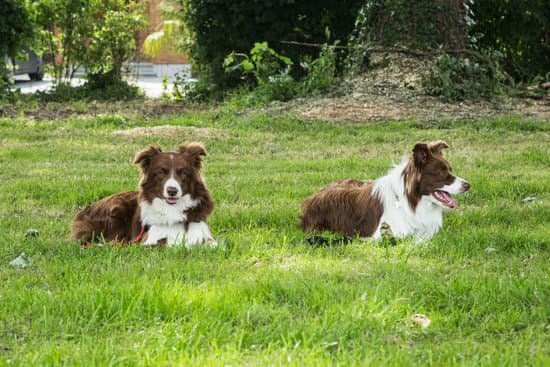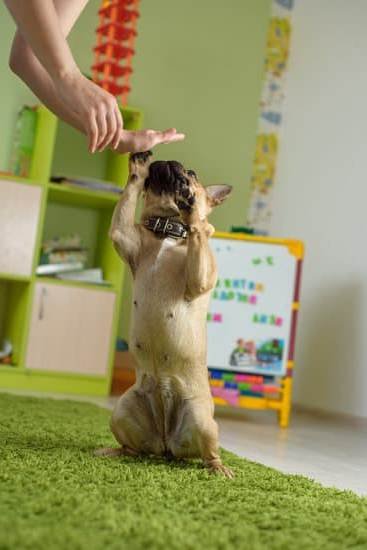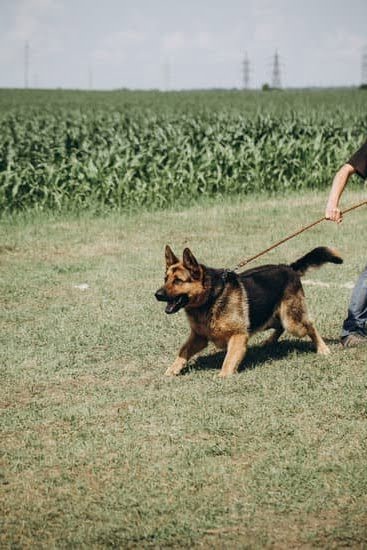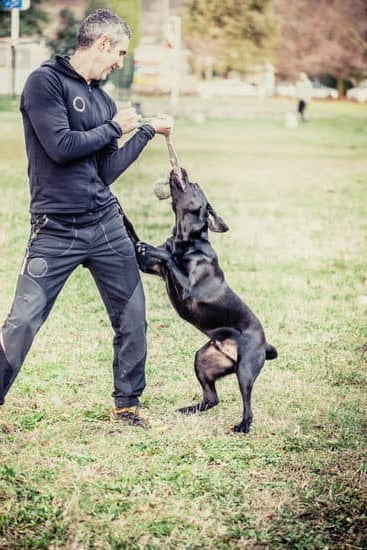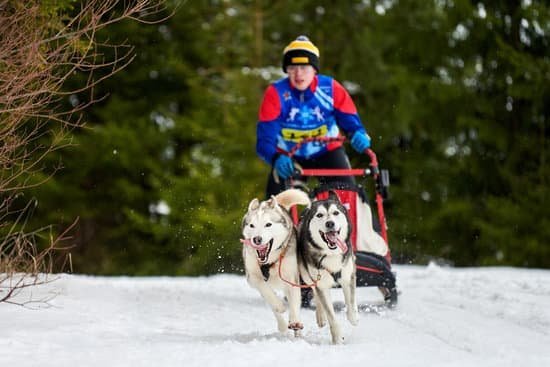Leaving your dog alone can be a challenging experience, especially if your furry friend struggles with separation anxiety. In this article, we will explore how to train your dog to handle being on their own through understanding the root of their anxiety, creating a safe space for them, and implementing positive reinforcement techniques.
Separation anxiety is a common issue among dogs and can manifest in various ways, including destructive behavior and excessive barking. Understanding the underlying causes of this anxiety is crucial in effectively training your dog to be comfortable when left alone.
To begin addressing separation anxiety in dogs, it is essential to recognize the signs and symptoms that may indicate a struggle with being alone. These can range from pacing and whining to destructive behaviors like chewing or digging. By identifying these behaviors early on, you can take steps to help your dog feel more at ease when left by themselves.
Creating a safe and comfortable environment for your dog is key in alleviating their separation anxiety. This involves setting up a designated area where they feel secure and providing them with toys or other items that bring them comfort. By establishing a comforting space for your dog, you can help them feel more at ease when left alone.
Signs and Symptoms of Separation Anxiety
Separation anxiety in dogs can manifest in a variety of ways, and as a responsible pet owner, it’s important to be able to recognize the signs and symptoms. Some common signs of separation anxiety in dogs include excessive barking or howling when left alone, destructive behavior such as chewing on furniture or other objects, and soiling inside the house even when house trained. Dogs with separation anxiety may also exhibit pacing, drooling, or attempting to escape from their confinement.
It is crucial for pet owners to understand the difference between normal behavioral issues and separation anxiety. While all dogs may display some level of distress when left alone, those with true separation anxiety will exhibit more extreme behaviors consistently. Understanding these signs will help dog owners identify whether their pet requires intervention and training to address their separation anxiety.
If you notice any of these signs in your dog when you leave them alone, it’s essential to take action with effective training methods specifically designed to alleviate separation anxiety. Positive reinforcement techniques and gradual exposure can help your dog learn to be comfortable on their own. A consistent routine and creating a safe space for your dog can also make a significant difference in addressing their separation anxiety.
| Signs of Separation Anxiety | Actions |
|---|---|
| Excessive barking or howling | Gradual introduction to alone time |
| Destructive behavior | Using positive reinforcement and rewards |
| Pacing, drooling, attempting to escape | Implementing a consistent routine |
Creating a Safe and Comfortable Space for Your Dog
One of the most important steps in training your dog to be comfortable with being alone is creating a safe and comfortable space for them to retreat to. Whether it’s a crate, a cozy corner, or a specific room, this space should be associated with positive experiences and feelings of security for your dog.
To create this space, consider the following tips:
- Choose an area that is quiet and free from distractions
- Make the space cozy with comfortable bedding and familiar toys
- Use pheromone diffusers or calming sprays to create a soothing environment
- Gradually introduce your dog to this space by spending time together in it before leaving them alone
By creating a designated safe haven for your dog, you can help alleviate their anxiety and make the training process more effective.
Additionally, providing interactive toys or puzzles can help keep your dog engaged and distracted while they are alone. These toys can provide mental stimulation and prevent boredom, which can contribute to separation anxiety. It’s important to choose toys that are safe for unsupervised play and will not cause any harm to your pet.
Gradual Introduction to Alone Time
Separation anxiety in dogs is a common issue that many pet owners face. It can be distressing for both the dog and the owner, but with the right training, it is possible to help your dog become more comfortable with being alone. One of the key aspects of training your dog to be alone is gradually introducing them to alone time.
Start Small
When training your dog to be alone, it’s important to start small and slowly build up their tolerance for being by themselves. Begin by leaving your dog alone for short periods of time, such as 5 or 10 minutes, and then gradually increase the duration as they become more comfortable with it.
Desensitization
Desensitization is a technique that can be used to help your dog become more accustomed to being alone. This involves exposing your dog to being alone in a controlled and gradual manner, so they can learn that it’s not a frightening or negative experience. For example, you might start by leaving the room for a few minutes while your dog has a toy or treat to keep them occupied, and then slowly extend the time you are away.
Stay Calm and Consistent
During this training process, it’s important to stay calm and consistent. If you show signs of stress or anxiety when leaving your dog alone, they may pick up on these emotions and become more anxious themselves. Instead, project an air of confidence and reassurance, and always provide positive reinforcement when your dog remains calm during alone time.
Using Positive Reinforcement and Rewards
Positive reinforcement and rewards play a crucial role in training your dog to be comfortable when left alone. By using positive methods, you can help your furry friend associate being alone with pleasant experiences, making the training process more effective and enjoyable for both of you.
Here are some ways to incorporate positive reinforcement and rewards into your training:
- Use treats: When your dog shows calm behavior while being alone, reward them with their favorite treats. This will reinforce the idea that being alone leads to positive outcomes.
- Offer toys: Provide interactive toys or puzzle feeders for your dog to play with while you’re away. This can help keep them entertained and distracted from any anxiety they may feel.
- Give praise: Whenever your dog displays relaxed behavior during alone time, shower them with praise and affection. Dogs thrive on positive attention, and this will reinforce the idea that being alone is a good thing.
In addition to these methods, it’s important to be consistent with your rewards and praise. By doing so, you can effectively communicate to your dog what behaviors are desirable when they are left alone. As you continue training, gradually decrease the frequency of rewards as your dog becomes more comfortable with being on their own.
By utilizing positive reinforcement and rewards, you can help alleviate separation anxiety in your dog and create a more harmonious environment for both of you. Remember that every dog is unique, so be patient and observant as you determine which methods work best for your furry companion.
Remember patience is key for success when considering how to train leaving your dog alone. It may take time but it will yield good results over time.
Implementing a Consistent Routine
When training your dog to be comfortable being alone, it is important to establish a consistent routine. Dogs thrive on predictability and structure, so having a regular schedule can help them feel more secure when left alone. This means feeding, walking, and playtime should all occur at the same times each day. Additionally, try to establish a consistent routine for leaving and returning home so that your dog knows what to expect.
Consistency also applies to the way you leave and return home. When leaving your dog alone, be calm and matter-of-fact about it. Avoid making a big production out of saying goodbye or giving excessive attention before you leave. The idea is to create a sense of normalcy around departures so that your dog doesn’t become anxious when you’re getting ready to leave.
Another aspect of establishing a consistent routine is creating a specific space for your dog when you’re away. Whether it’s a room or a crate, this designated area should be associated with positive experiences for your dog. Make sure the space is safe and comfortable with their favorite toys, blankets, and treats. Gradually getting your dog used to spending time in this space while you’re home can help them associate it with feelings of security and relaxation.
| Training Tip | Description |
|---|---|
| Establish A Routine | Create a consistent schedule for feeding, walking, and playtime. |
| Calm Departures | Be calm and matter-of-fact when leaving your dog alone. |
| Create Safe Space | Designate a specific area for your dog with their favorite toys and treats. |
Seeking Professional Help if Needed
When to Seek Professional Help
If your dog continues to exhibit severe separation anxiety despite your efforts and the use of positive reinforcement, it may be time to seek professional help. A professional dog trainer or behaviorist can provide an objective assessment of your dog’s behavior and develop a tailored training plan.
Working With a Professional
A professional will work with you to understand your dog’s specific triggers and behaviors related to separation anxiety. They can provide guidance on how to train leaving your dog alone using techniques that are based on scientific principles of learning and behavior.
Medication Options
In some cases, medication may be recommended by a veterinarian in combination with behavior modification training. Medication can help alleviate the symptoms of separation anxiety in some dogs, making it easier for them to respond positively to training exercises.
Seeking professional help does not mean that you have failed as a pet owner. It simply means that you are willing to do whatever it takes to ensure the well-being and happiness of your furry friend. Remember that every dog is different, so what works for one dog may not work for another. By working with professionals, you can gain valuable insights and support in helping your dog overcome separation anxiety.
Tips for Managing Separation Anxiety During Training
Training your dog to be comfortable when left alone can be a challenging process, especially if your furry friend suffers from separation anxiety. However, with the right techniques and patience, you can help ease your dog’s distress and train them to be more independent. In this section, we will discuss some helpful tips for managing separation anxiety during training.
One effective tip for managing separation anxiety during training is to start with short periods of alone time and gradually increase the duration as your dog becomes more comfortable. This gradual approach helps prevent overwhelming your pet and allows them to build confidence in being by themselves. Additionally, it’s important to always reward your dog for calm behavior when left alone, using treats or toys to positively reinforce their ability to stay relaxed while you are away.
Another tip is to desensitize your dog to pre-departure cues that trigger their anxiety. This involves practicing activities such as picking up keys or putting on a coat without actually leaving the house.
By desensitizing these cues, you can help reduce the stress and fear that may arise in your dog before you even leave. Additionally, providing engaging toys or puzzles for your dog to focus on while alone can help distract them and alleviate their anxiety during your absence.
Consistency is key when managing separation anxiety during training. Establishing a routine for departure and arrival times can help create a sense of predictability for your dog, reducing their anxiety about when you will leave or return. By following these tips and being patient with the process, you can effectively manage separation anxiety during training and help your dog become more confident and comfortable when left alone.
Building Independence Through Training Exercises
Training your dog to be comfortable when left alone is an important part of their development. Building independence through training exercises can help reduce separation anxiety and create a more confident and well-adjusted pet. Here are some tips on how to train leaving your dog alone through various exercises.
One effective exercise is desensitization, which involves gradually increasing the amount of time your dog spends alone. Start by leaving your dog alone for just a few minutes, then gradually extend the duration as they become more comfortable. This helps them learn that being alone is not something to fear, and can build their confidence over time.
Another helpful training exercise is practicing departures and arrivals. This involves simulating leaving the house by picking up your keys or putting on your coat, then sitting back down without actually leaving. This can help desensitize your dog to the triggers of departure, making it easier for them to handle when you do eventually leave.
Additionally, engaging in interactive play and mental stimulation activities with your dog can also help build their confidence and independence. Teaching them basic obedience commands such as sit, stay, and come can give them a sense of control and security even when you’re not around. These exercises not only strengthen the bond between you and your pet but also provide them with a sense of security in being able to follow commands effectively.
By incorporating these training exercises into your routine, you can help your dog feel more secure and at ease when left alone. Remember to be patient and consistent in your approach, and always use positive reinforcement to reward good behavior. With time and practice, you can successfully train your dog to be comfortable with being independent.
Monitoring Progress and Adjusting Training as Necessary
In conclusion, training your dog to be comfortable being alone is a gradual process that requires time, patience, and dedication. By understanding separation anxiety and recognizing the signs and symptoms in your dog, you can create a safe and comfortable space for them to help alleviate their anxiety. Gradually introducing alone time, using positive reinforcement, and implementing a consistent routine are all essential components of the training process.
It’s important to remember that every dog is different, and what works for one may not work for another. This is why monitoring progress and adjusting the training as necessary is crucial. Keep an eye on your dog’s behavior during alone time and make any necessary tweaks to the training plan to better suit their needs. It’s also important to be aware of tips for managing separation anxiety during training and seeking professional help if needed.
Building your dog’s independence through various training exercises will also contribute to their ability to be left alone comfortably. Remember that this journey will have its ups and downs, so stay patient and continue working with your dog towards achieving this goal. With dedication and the right approach, you can train your dog to feel secure when being left alone.
Frequently Asked Questions
How Do I Practice Leaving My Dog Alone?
Practicing leaving your dog alone involves gradually increasing the time you spend away from them. Start with short absences, then gradually extend the time as your dog becomes more comfortable. Use positive reinforcement to help them associate being alone with something positive.
How Long Does It Take for a Dog to Get Used to Being Left Alone?
The time it takes for a dog to get used to being left alone varies depending on the individual dog. Some dogs may adjust in a few weeks, while others may take months. It’s important to be patient and observe your dog’s behavior to gauge their progress.
Can Dogs Be Trained to Be Left Alone?
Yes, dogs can be trained to be left alone through desensitization and counter-conditioning techniques. This involves gradually exposing the dog to being alone, using positive reinforcement to create a positive association with being by themselves. Consistency and patience are key when training a dog to be left alone.

Welcome to the blog! I am a professional dog trainer and have been working with dogs for many years. In this blog, I will be discussing various topics related to dog training, including tips, tricks, and advice. I hope you find this information helpful and informative. Thanks for reading!

